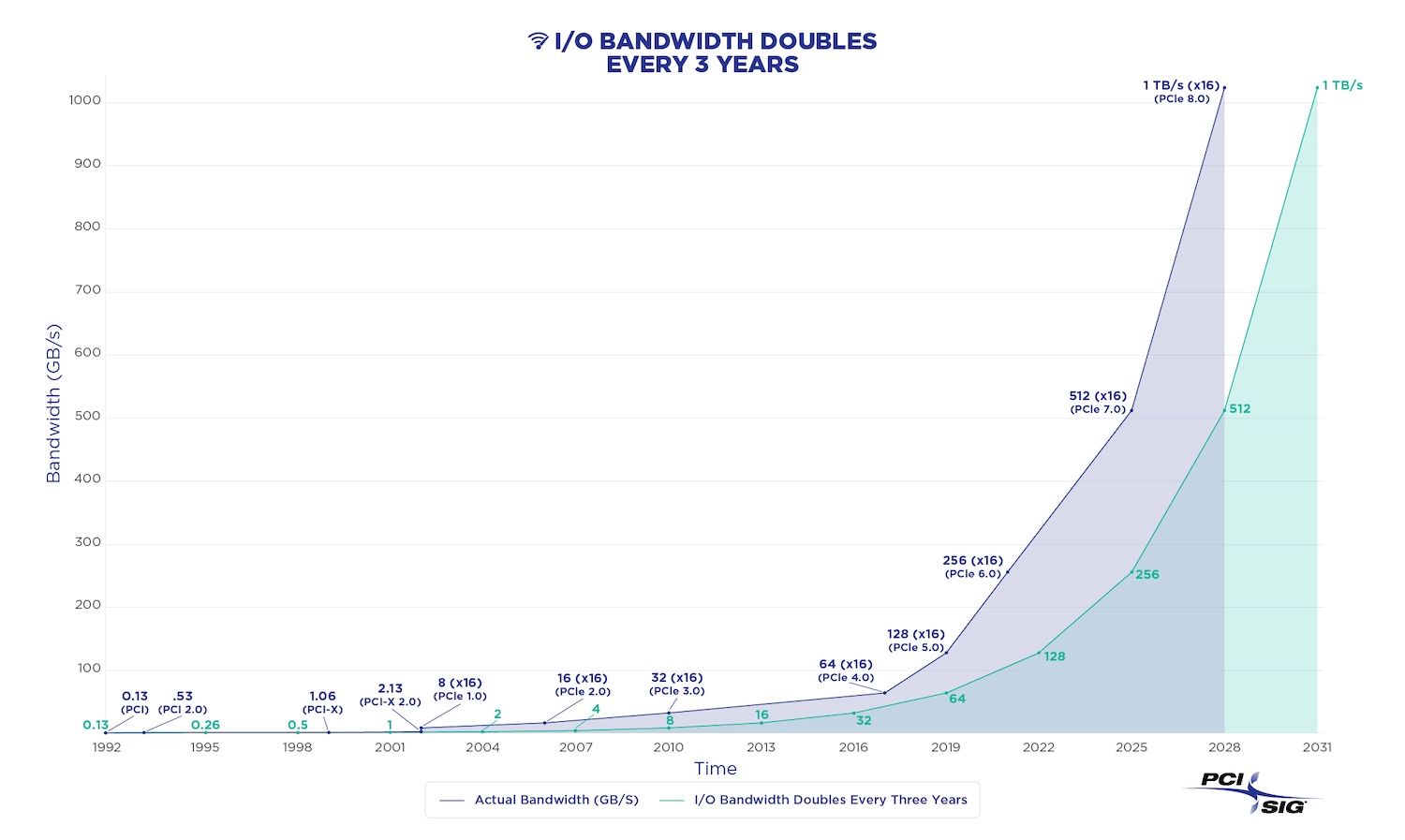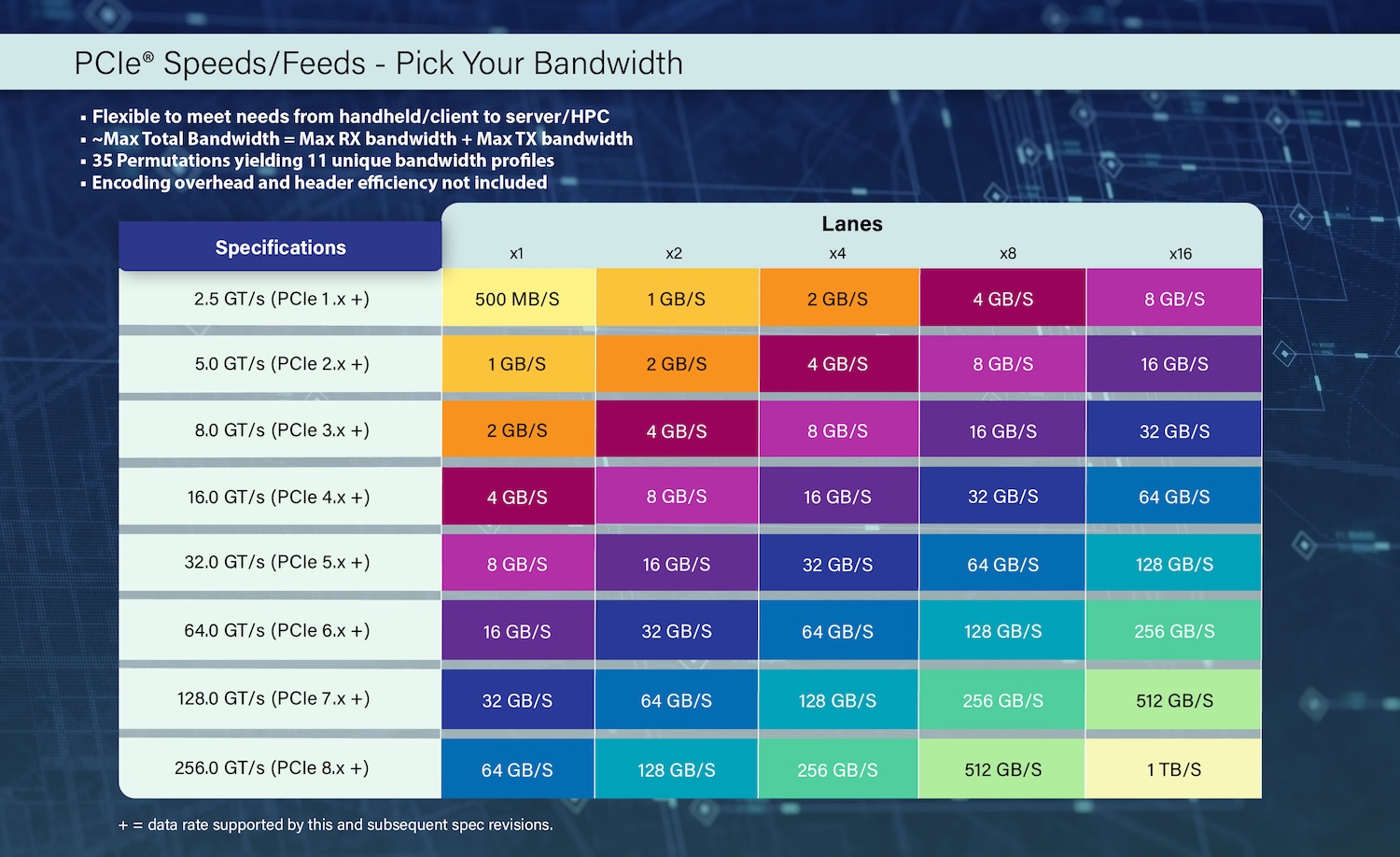The PCI-SIG has officially announced the forthcoming PCI Express (PCIe) 8.0 specification, which is set to double the data rate of the current PCIe 7.0 standard, reaching an impressive 256.0 GT/s. This leap in performance is scheduled for release to PCI-SIG members by 2028, continuing the organization’s established cadence of bandwidth doubling every three years. This rapid evolution is a direct response to the relentless growth in data-intensive workloads and the increasing sophistication of modern applications.

Objectives and Enhancements
The PCIe 8.0 specification is being developed with a clear set of technical objectives. Foremost among these is the delivery of a 256.0 GT/s raw bit rate, enabling up to 1 TB/s of bi-directional throughput in a standard x16 configuration. This level of performance is critical for supporting the next wave of high-performance computing, AI/ML workloads, and advanced networking solutions.
To achieve these ambitious targets, PCI-SIG technical workgroups are actively reviewing new connector technologies that can support higher signal integrity and improved power delivery. The specification will also focus on confirming that latency and Forward Error Correction (FEC) targets are met, ensuring that the increased speeds do not come at the expense of reliability or data integrity. Maintaining robust reliability metrics is a core requirement, especially as PCIe technology is increasingly deployed in mission-critical environments such as hyperscale data centers, military, and aerospace applications.

Backwards compatibility remains a cornerstone of the PCIe ecosystem. The PCIe 8.0 specification will ensure seamless interoperability with previous generations, protecting existing infrastructure investments and simplifying the transition for OEMs and end-users alike. Additionally, protocol enhancements are being developed to improve bandwidth efficiency further, while new techniques to reduce power consumption are being emphasized to address the growing importance of energy efficiency in large-scale deployments.
Industry Perspective and Market Impact
Al Yanes, President and Chairperson of PCI-SIG, emphasized that the PCIe 8.0 specification is a direct continuation of the organization’s commitment to doubling bandwidth every three years. He highlighted that this ongoing innovation is essential for supporting advanced applications such as artificial intelligence, which demand ever-increasing I/O performance. Yanes also underscored the importance of delivering a cost-effective, high-bandwidth, and low-latency interconnect solution to meet the evolving needs of the industry.
Industry analysts echo this sentiment. Reece Hayden, Principal Analyst at ABI Research, noted that the demand for PCIe technology will remain strong, driven by the bandwidth requirements of AI and other data-intensive applications. Hayden observed that while data center networks are currently implementing PCIe 6.0, there is already significant interest in the capabilities promised by PCIe 7.0 and beyond. This forward-looking adoption underscores the critical role PCIe plays in the ongoing evolution of data center and enterprise infrastructure.
Enabling the Next Generation of Applications
The PCIe 8.0 specification is strategically targeted at supporting a broad spectrum of emerging applications. These include AI and ML, high-speed networking, Edge computing, and even Quantum computing. The specification is also designed to address the needs of data-intensive markets such as automotive, hyperscale data centers, high-performance computing (HPC), and military/aerospace sectors.
By delivering unprecedented bandwidth, low latency, and robust reliability, PCIe 8.0 is poised to become the backbone of next-generation computing platforms. Its focus on backward compatibility, power efficiency, and protocol enhancements ensures that it will not only meet the demands of today’s most advanced workloads but also provide a scalable foundation for future innovation.




 Amazon
Amazon